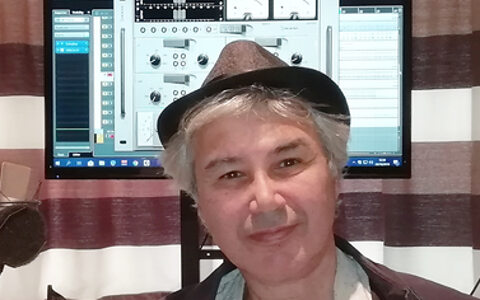
Inside Track: Kali Uchis 'Fantasy'
High‑end outboard is an essential part of Prash Mistry’s mixing and mastering setup — as heard on Kali Uchis’ hit album Red Moon In Venus.

High‑end outboard is an essential part of Prash Mistry’s mixing and mastering setup — as heard on Kali Uchis’ hit album Red Moon In Venus.

When should you Commit your audio, and when should you Freeze it?

Despite being over 30 years old, ADAT Lightpipe remains the number one way to add more inputs and outputs to your DAW.

Novation’s Launchpad controllers offer hands‑on control over Logic’s Live Loops.

Grammy-winning Samuel Dixon picks his favourite sound from the records he’s made, focusing on Australian singer‑songwriter Meg Washington’s track ‘Switches’.

We tend instinctively to think of audio‑rate oscillators as sound‑generating circuits and low‑frequency oscillators (...

With its Raiser plug‑in, Cubase Pro can raise hell with your drum sounds!

We revisit Reason’s venerable virtual analogue, Subtractor.

Eddie Bazil demystifies Compression and Expansion with a detailed explanation of their uses, which he demonstrates using plug-ins through seven practical examples.
Audio files to accompany April 2023's Cubase workshop.

The Strip Silence function can speed up your mix preparation.

Metro Boomin’s right‑hand man is championing old‑school mixing techniques in the 21st Century.

Cubase doesn’t include an envelope follower — but with a little creative routing you can achieve much the same thing.

We talk you through the basics of editing audio in Studio One.

Asked to choose a favourite sound to dissect, Leo nominated the track ‘Harm Organ’ from his 2021 solo album, Scene Memory 2.

Behind their basic user interfaces, Logic’s legacy plug‑ins offer some serious sonic magic.

ARA makes using Melodyne in DP a cinch!

It’s nearly a decade since the LUFS standard for loudness measurement was defined, yet many still seem confused about what it means for music production.

This DIY adaptor cable will fool your organ into thinking a real Leslie is attached.

Paul White explains how to get the best out of Amp Simulation software, from achieving a good guitar input signal, setting up effective monitoring for encouraging the best performance and tips on obtaining the desired end-effect.